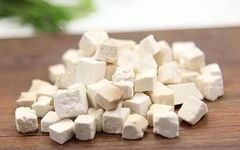Fu Ling (Poria)
1The Story of Fu Ling
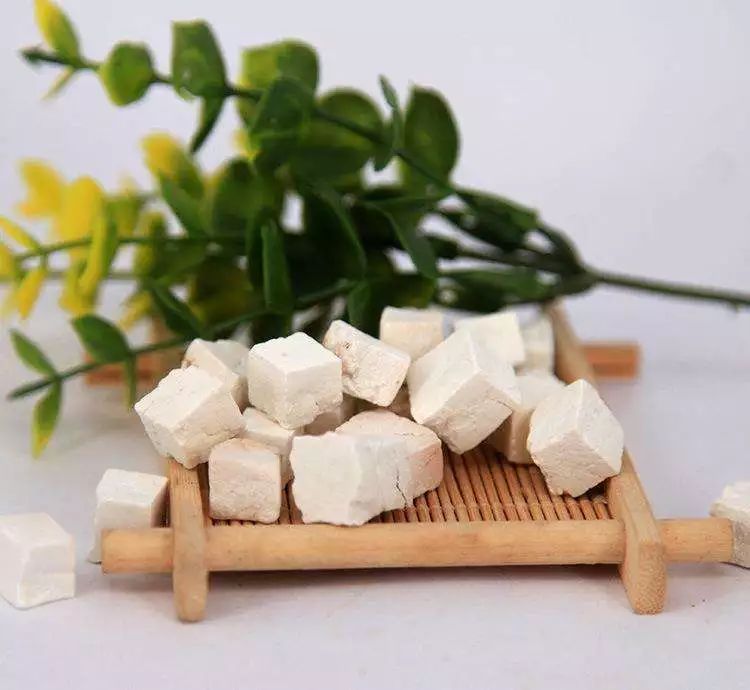
Fu Ling is classified as a superior herb in the Shen Nong Ben Cao Jing (Shen Nong’s Classic of Materia Medica). The Ming dynasty physician Li Shizhen explained its name in the Ben Cao Gang Mu (Compendium of Materia Medica), stating: “Fu Ling, Fu Tu, Song Yu, Immortal Face, and those who embrace its root are called Fu Shen.” In the Records of the Grand Historian, it is referred to as Fu Ling. It is said to be formed from the spirit energy of the pine, thus named Fu Ling and Fu Shen.
According to legend, when Genghis Khan was fighting in the Central Plains, continuous rain fell for months, causing his soldiers to suffer from rheumatic diseases due to the unfamiliar environment. As defeat loomed, he became very anxious. Later, a few soldiers accidentally consumed Fu Ling and miraculously recovered. Overjoyed, he quickly sent people to transport large quantities of Fu Ling from Luotian County, where it was abundant. After consuming it, the soldiers’ rheumatic conditions indeed improved. Genghis Khan ultimately won the battle, and the miraculous efficacy of Fu Ling in treating rheumatism became widely known.
2Origin of Fu Ling

Fu Ling is the dried sclerotium of the fungus Poria cocos, primarily produced in Anhui, Yunnan, and Hubei provinces.
This herb has a mild aroma and a bland taste. The best quality is characterized by a fine, white, and delicate cut surface with strong adhesive properties. It is used raw.
3Pharmacological Properties of Fu Ling
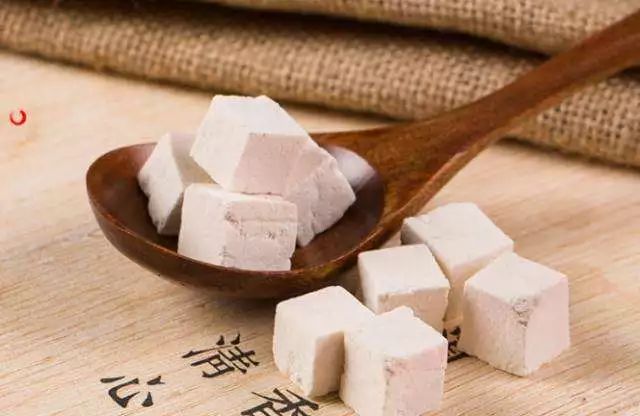
Shen Nong Ben Cao Jing: It is used for chest and flank Qi counterflow, anxiety, fear, heart pain, cold and heat fullness, cough, dry mouth and tongue, promotes urination, and long-term use calms the soul and nourishes the spirit.
Ming Yi Bie Lu: It stops thirst and promotes sleep, treats abdominal edema, phlegm and water in the diaphragm, edema and urinary obstruction, opens the chest, regulates organ Qi, eliminates kidney evil, nourishes Yin, boosts Qi, and protects the spirit.
Famous physician Zhen Quan: It opens the appetite and stops nausea, calms the spirit, treats lung phlegm obstruction, abdominal distension, childhood convulsions, and women’s heat-related urinary issues.
Ben Cao Gang Mu: Fu Ling has a bland taste and is permeating; its nature ascends, generates body fluids, opens pores, nourishes water sources and descends, promotes urination, thus Zhang Jiegu classified it as Yang, floating and ascending, referring to its nature; Dong Yuan classified it as Yin within Yang, descending and lowering, referring to its function.
Properties and Channels: Sweet, bland, neutral. Enters the Heart, Lung, Spleen, and Kidney channels.
Functions: Promotes urination and leaches out dampness, strengthens the Spleen, calms the heart and spirit.
Primarily used for edema and reduced urination; phlegm and dizziness; Spleen deficiency with poor appetite and diarrhea; anxiety and insomnia.
4Contraindications of Fu Ling
This herb is sweet, bland, and leaching, thus should be used cautiously in cases of Yin deficiency without damp-heat, deficiency-cold with slippery essence, and Qi deficiency with sinking.
5Fu Ling is a Treasure
Fu Ling is referred to as a “divine medicine for all seasons” in the Shen Nong Ben Cao Jing, usable in all four seasons, with extensive efficacy, making it a treasure.
The dried outer skin of Fu Ling is called Fu Ling Pi, which is brown or black on the outside and white or light brown on the inside. It is relatively soft and slightly elastic. Its properties are sweet, bland, and neutral; it enters the Heart, Lung, Kidney, and Spleen channels. Its function is to promote urination and reduce swelling, suitable for edema and urinary difficulties.
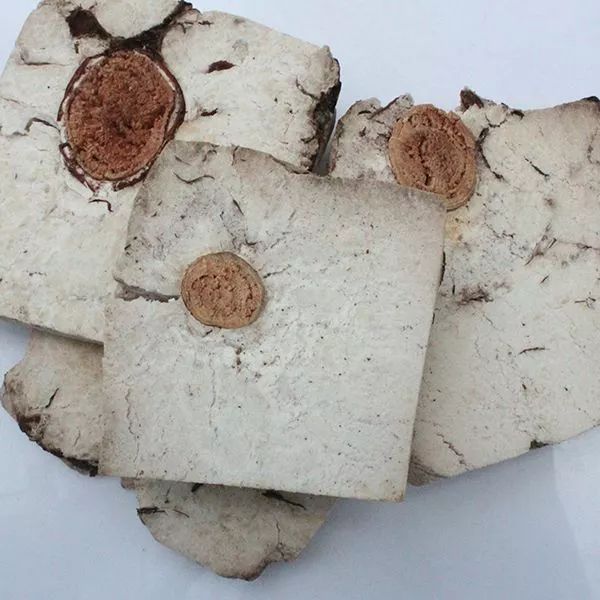
The dried sclerotium of Fu Ling contains a part of the pine root, known as Fu Shen. The Ben Cao Jing Shu records: Fu Shen grows embracing the wood heart, distinguishing it from Fu Ling. Its properties are sweet, bland, and neutral; it enters the Heart, Lung, Spleen, and Kidney channels. Its function is to calm the heart and spirit, suitable for anxiety, palpitations, forgetfulness, and insomnia. The Ming Yi Bie Lu states that Fu Ling is more commonly used for the Spleen and Kidney, while Fu Shen is more often used for the Heart.
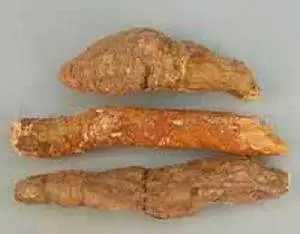
The curved pine root growing in Fu Shen is called Fu Shen Mu, also known as Shen Mu or Huang Song Jie. It is light and soft, with a sweet taste and neutral nature, entering the Heart and Liver channels. It is used to treat beriberi pain and various muscle contractions.
6Dietary Therapy with Fu Ling
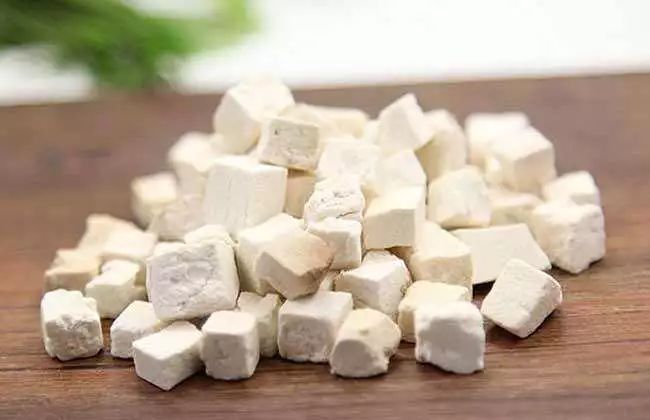
Health scholars say that Fu Ling, when aged over a thousand years, transforms into a rabbit or a bird, and consuming it lightens the body and achieves immortality. Throughout history, physicians and health scholars have valued Fu Ling for its longevity benefits. During the Tang and Song dynasties, consuming Fu Ling was quite common. The Song dynasty literary figure Su Dongpo was skilled at making Fu Ling cakes. He pointed out that to make Fu Ling cakes, “use nine steams of sesame, add peeled Fu Ling and a little white honey to make cakes. Over time, one’s strength does not decline, and all diseases naturally disappear; this is the secret to longevity.” It is said that Su Dongpo, even at sixty, had an astonishing memory and a strong body, likely due to his regular consumption of homemade Fu Ling cakes.
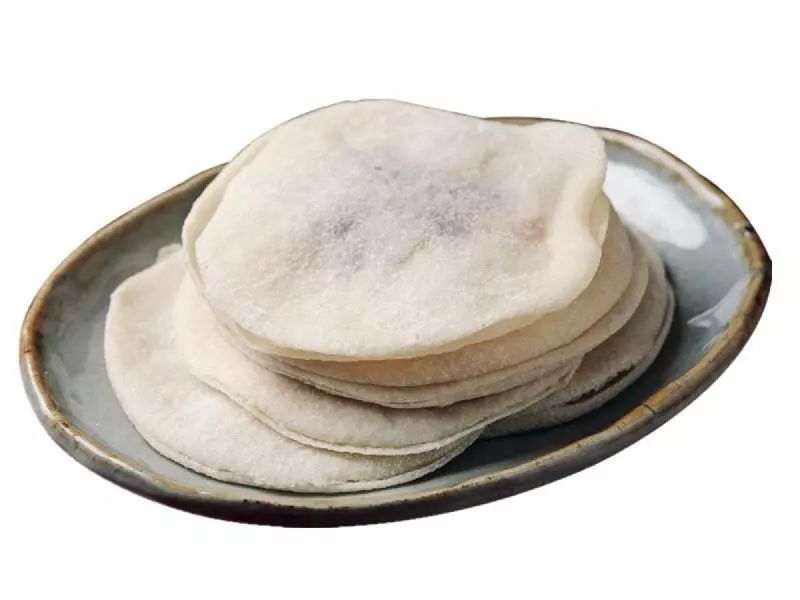
Fu Ling Cake
Ingredients: Fu Ling, 500g of rice flour, 100g of white sugar.
Preparation: First, grind Fu Ling into fine powder, sift through a 100-mesh sieve, then mix Fu Ling powder, rice flour, and white sugar in a bowl, add water to form a paste, and cook in a flat pan over low heat to make thin cakes.
Function: Strengthens the Spleen and boosts Qi, promotes urination and leaches out dampness.
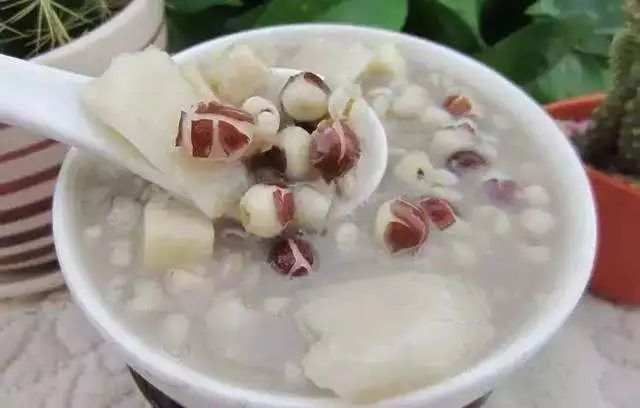
Fu Ling Porridge
Ingredients: 100g of Fu Ling, 100g of Chinese yam, 50g of fox nut, 100g of japonica rice.
Preparation: Wash the above ingredients, add an appropriate amount of water to cook porridge, and it is ready to eat when cooked.
Function: Strengthens the Spleen, transforms dampness, nourishes the stomach, and generates fluids.



